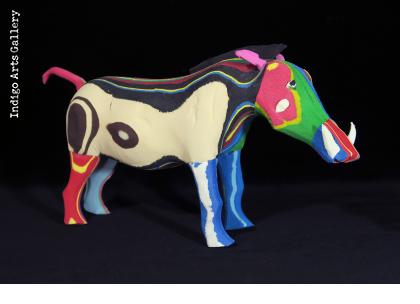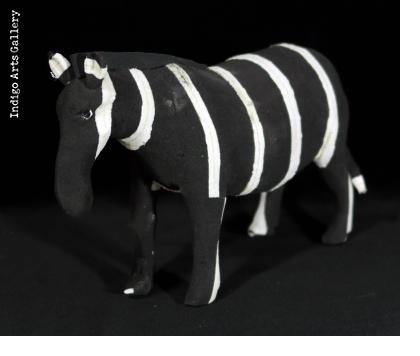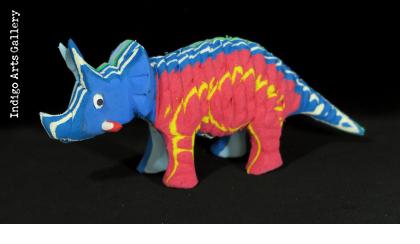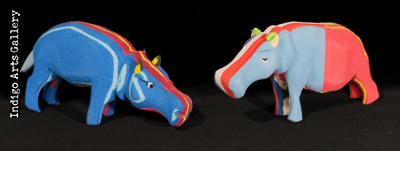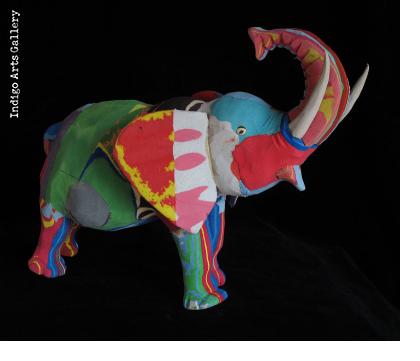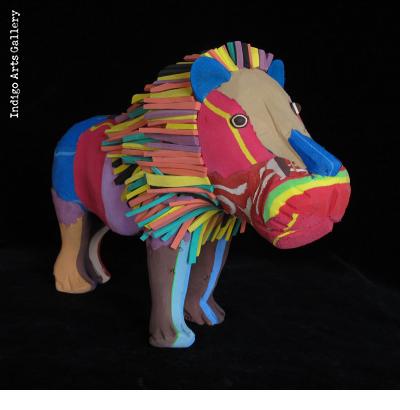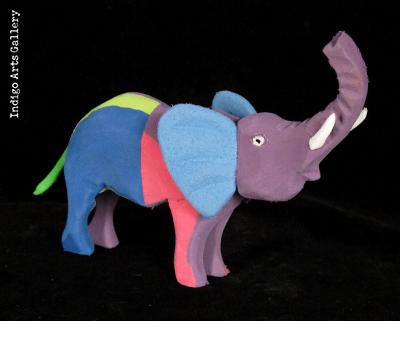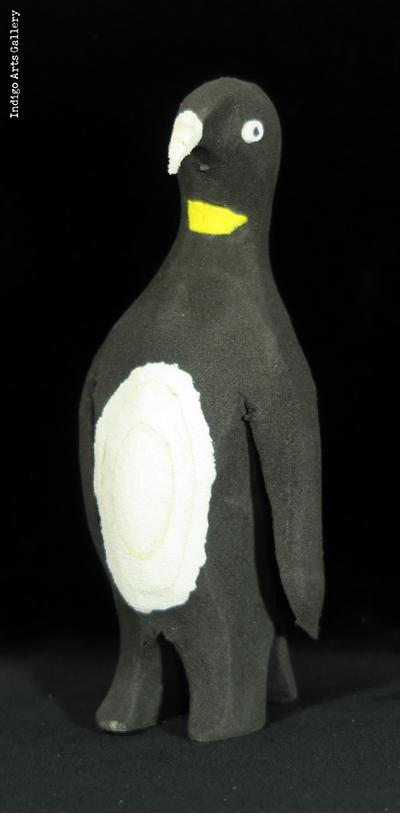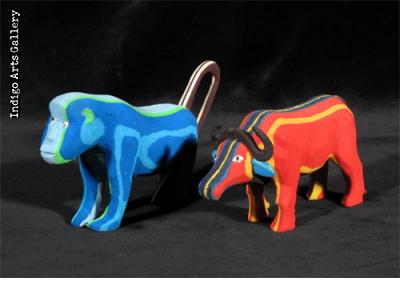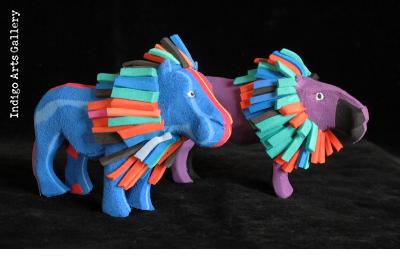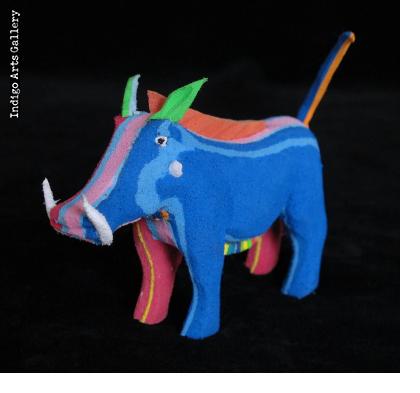Sculpture made from recycled flip-flops by the UniquEco project in Kenya. Indigo Arts owner Tony Fisher visited their workshop in Nairobi in February, 2011.
HandEye magazine visited the UniquEco workshop in December, 2010. Editor Keith Recker wrote about the project:
Unique-Eco cleans up the Kenyan shoreline and uses what it carts away to create sculpture and jewelry that are getting attention in European fashion circles.
Julie Church went from being a marine biologist to businesswoman… just because she had to. The shoreline habitats of Kenya were swamped with garbage and something had to be done. She recognized the inventiveness of local artisans using the trash to create saleable goods…and created Unique-Eco Designs, which collaborates with Kenyan artisans on collecting flip flops and plastic sandals from the shoreline (along with other garbage), and then transforming them into playful sculptures and bright, witty jewelry. Unique-Eco has been featured recently at Rome’s fashion week. The group’s reputation is growing. Garbage is lessening. Artisans are earning. Full steam ahead. Founder Julie Church answered a few questions from HAND/EYE international scout Jacqui Starkey and editor Keith Recker.
HAND/EYE: How did you move from being an expert on coral reef fishlife into a guru of recycled products?
Julie Church: I started working on the north coast of Kenya as the Project Coordinator for a Marine Conservation and Development Initiative along the Kiunga Marine National Reserve, bordering Somalia, in 1997. When I got there one of the first projects we focused on was the turtle conservation project. Whilst focusing on this we came across loads of rubbish on the beach which hindered the nesting turtles and their hatchlings from getting to the sea. At the same time I saw the children making their toys from the flotsam and jetsam on the beach i.e. Boats, planes, cars. Also thanks to a women’s health worker, the women had collected flipflops to cut into small pieces for beach cushions. On seeing this I realised that perhaps we could ‘kill 2 birds with one stone.” We could conserve the turtles by cleaning up the beaches and provide development by building on what the community was already doing. So we started!
I encouraged the women to make marine animals – turtles, whales, dugongs, dolphins etc from the flipflops. We used the same concept as the children -- i.e. sticking together the items with sticks and thorns. But as the orders and interest grew, and particularly thanks to WWF Switzerland’s 15,000-piece turtle keyring order, the concept progressed. Glue, eyelets, a hole punch and proper sizes had to be kept to. The women became more and more proficient in the making. Similarly, beads were produced from the punched out holes- and we then came up with a number of ideas for beads!
I worked in this position until the end of 2003, early 2004. I had then toyed with the idea of providing a marketing arm for the community flipflop art work. Also Tahreni Bwanaali, a community worker from the area, carried out a survey and approached me. Together we came up with the idea of a something more sustainable, long term and durable. We set up UniquEco – the (Flipflop) Recycling Co as a company in August 2005.
We have since developed our product lines, experience, team and overall production enormously. We are now flipflop recycling experts.
What's working especially well at Uniqueco?
The development of a team is working very well. We still work with the women I started with in 1997, and others who have been trained since. We have expanded our community production work to communities on the south coast of Kenya. We also have a good in-house team and bring in local experts when needed.
We have also expanded our collection to urban areas and contribute to a greener and cleaner Nairobi by paying for the collection of discarded flipflops in Kibera.
We have also streamlined our business in a way to become robust in the overall business market. We have had to. We turned over about USD 36,000 in our first 18 months of work and last year we turned over about USD 115,000. We have not yet made a profit but we are learning to become more robust and efficient.
What products are selling? What are customers reaction to? Who are the customers?
Our customers are extensive and global, ranging from Hawaii to Australia. We have customers all across America, in Brazil, Australia, South Africa, Zambia, Kenya, Tanzania, Uganda, UK, France, Italy, Germany, Sweden, Holland, Denmark, and Finland. We sell to wholesalers as well as individual customers.
People find us on their own mostly, and their reaction is one of interest, adventure and willingness to help! We are hugely grateful to the interest generated by our work!
What's the benefit to Kenyan artisans and on the Kenyan natural environment?
For artisans, we promote skill development, income earning opportunities from waste, and an opportunity to learn about recycling and that a healthier environment equals healthier people.
For the environment, we clean up beaches in Kenya from the south to the north using local communities, which results in better/cleaner nesting sites for turtles, less rubber waste in Kenya’s oceans, and greater general awareness about the ocean.
Text above reproduced courtesy of HandEye magazine


